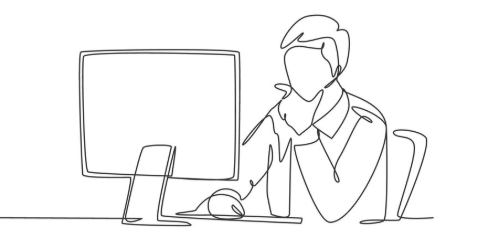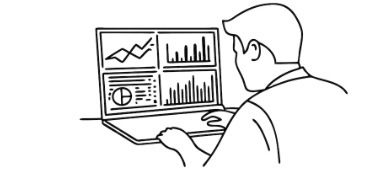Why You Feel Unsafe When You Trade
Feeling pressure while trading? Learn how proper risk management acts like a helmet—protecting your capital and sharpening your mindset.
Imagine you’re walking into a cricket pitch with no helmet, no gloves, and the bowler is clocking 150 km/h. How would you feel?
Tense? Exposed? Afraid?
That’s exactly how most traders feel when they enter the market with no risk management.

risk management in trading
In India, many new traders—especially those aged 30–45—jump into the market with excitement but no psychological or financial protection. And when the market turns against them, panic sets in. Trades are exited too early, stop-losses are widened emotionally, and one big loss wipes out months of effort.
But what if you could feel safe while trading? Just like a football player relies on his helmet, shoulder pads, and team defense, you need a trading helmet—called risk management.
Let’s explore why managing risk is not just about saving money, but also about calming your mind and giving you a winning edge in the market.
🧠 Why Risk Management Is Your Helmet in the Market
In football or kabaddi, no player walks into the field without protection. Yet traders often risk their entire capital with no stop-loss, no position sizing, and no plan.
Risk management in trading does two powerful things:
- Financial Protection: Prevents big hits to your account.
- Psychological Safety: Keeps your mind calm so you can trade with clarity.
🎯 Real-Life Analogy: The Quarterback Under Pressure
Think of a quarterback in American football (or a batsman facing a hostile spell in cricket). If he has no protection or weak teammates, he’ll panic and throw the ball early.
Result? Interception. Loss. Failure.
Similarly, in trading:
- You feel the pressure of loss.
- Your brain enters fight-or-flight mode.
- You act impulsively.
But when protected—with capital allocation, stop-losses, and a predefined plan—you feel safe. You give yourself space to observe, wait, and act wisely.
🛑 Why Pressure Leads to Bad Trades
The Psychology Behind Panic
Stress narrows our focus. It shrinks our decision-making window. You become reactive, not strategic.
Here’s what it looks like in trading:
- You’re down 1% → You widen your stop-loss.
- You see a red candle → You exit too early.
- Market moves fast → You FOMO into bad trades.
Result: Regret, confusion, loss.
😣 The Fight-or-Flight Response in Trading
When the body feels threatened, it pumps adrenaline. You stop thinking long-term and act to protect immediately.
In trading, this translates to:
- Chasing losses
- Breaking rules
- Revenge trading
👉 Without a system of risk protection, your brain turns into a gambler—not a strategist.
🧘🏽 Risk Management = Mental Clarity
When your downside is limited, your brain knows it’s safe. And this awareness changes your emotional state.
“Risk management doesn’t just save your money. It saves your mind.”
✅ What Happens When You Trade with Protection:
- You respect your stop-loss.
- You avoid oversized positions.
- You think long-term.
- You ride trends patiently.
You start behaving like a calm investor—not a scared speculator.
📋 Practical Ways to Manage Risk Like a Pro
1. Use Stop-Losses Religiously
Always define the maximum loss you’re willing to take on each trade.
Example:
Bought stock at ₹1,000
SL at ₹970
→ Risk per share = ₹30
2. Position Sizing: Don’t Bet the House
Use this simple rule:
Risk only 1–2% of your capital per trade.
If your capital is ₹1,00,000:
- Max loss per trade = ₹1,000–₹2,000
This ensures one bad trade doesn’t ruin your account—or your mood.
3. Pre-Plan Your Trades
Before entering:
- Set Entry Price
- Target Price
- Stop-Loss
- Risk/Reward Ratio
This turns every trade into a calculated decision.
4. Avoid Overtrading
One trade with high conviction is better than five random trades.
Treat every trade like a bowler’s limited over spell. Conserve your energy and capital.
💬 Desi Wisdom: How Indian Traders Can Relate

- Would you leave your house without a helmet on a rainy, potholed road in Bengaluru or Mumbai?
No. So why would you enter Nifty without a stop-loss? - You don’t put all your savings into one chit fund, right?
Then why risk your entire trading capital on a single trade?
Indian traders often take pride in “gut feeling” and “experience,” but the market doesn’t care. It rewards discipline and protection, not bravado.
📈 Case Study: Rahul vs. Vikram
Rahul:
- No stop-loss
- 20% of capital in one trade
- Lost ₹30,000 in one bad trade
- Took weeks to recover emotionally
Vikram:
- Risked only 1.5% per trade
- Loss was capped at ₹1,500
- Bounced back the next day
- Stayed calm and continued learning
Who will last longer in the markets? Who will build a career?
👉 It’s not the one with the best analysis. It’s the one with the best protection.
🔑 What You Should Remember
- Risk management is like wearing a helmet in traffic—you won’t need it every time, but when you do, it can save your life (and capital).
- It reduces anxiety, boosts confidence, and improves decision-making.
- Calm minds make good trades. Risk rules create calm minds.
🙌 Mindset Shifts for Long-Term Success
| Old Belief | New Belief |
| “More risk = more returns” | “Smarter risk = consistent returns” |
| “Stop-losses are for weak traders” | “Stop-losses are for smart survivors” |
| “I can recover losses later” | “I protect capital so I can stay longer” |
📣 Call-to-Action:
If this blog gave you clarity, share it with one trader friend who’s been trading without a helmet. And drop a comment below:👉 What’s your #1 risk management rule?

Why do I panic during trades even if I know my strategy?
Because unmanaged risk triggers fear and clouds your logic.
How much should I risk per trade?
Just 1–2% of your total trading capital.
What is the biggest benefit of using stop-losses?
They protect both your capital and your emotional stability.
How can I stay calm during volatile markets?
By knowing your maximum risk in advance and sticking to your plan.
Does risk management improve performance?
Yes, because it reduces emotional errors and allows rational decisions.